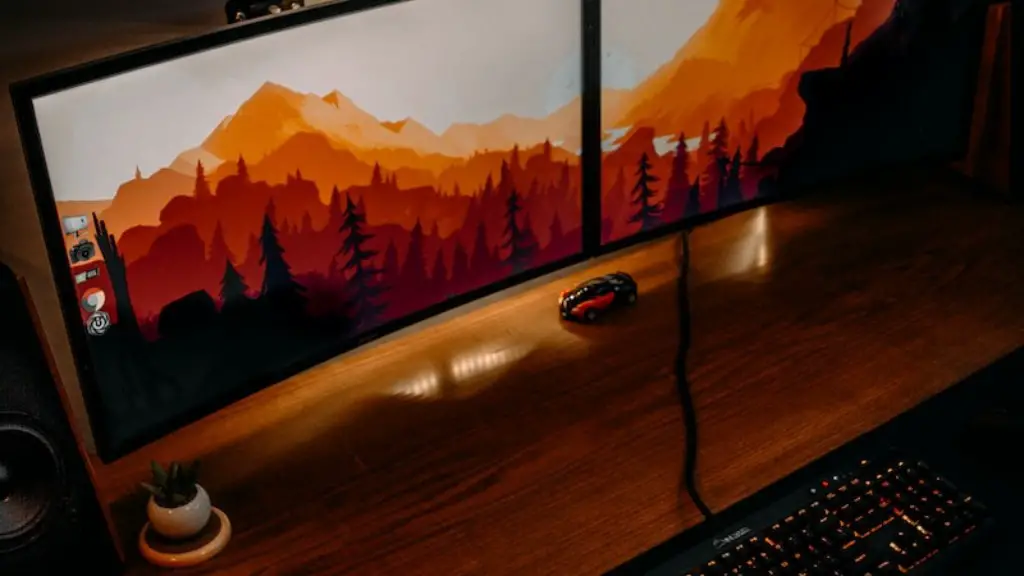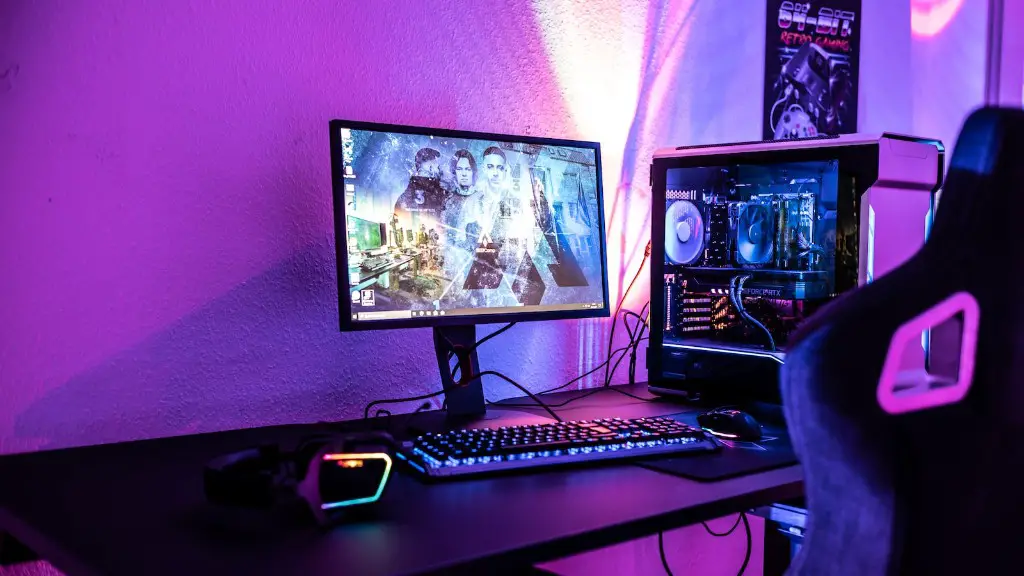Gaming monitors come in various sizes, but how do you determine how many inches should you get to enjoy the fullest gaming experience? This can be a tricky question to answer, as some people prefer a smaller monitor for the sharpness of the picture, while others prefer a larger monitor for a more immersive experience. There are also other factors such as refresh rate, input lag and resolution that play into the equation. Ultimately, the decision between a larger or smaller monitor should come down to how you want to experience your games. Here are some tips to help you decide how many inches of a monitor you should get.
A larger monitor offers a much more immersive gaming experience, allowing you to see more detail and have a better view of the action. Larger monitors typically have higher resolutions too, meaning you don’t have to sacrifice quality for size. Monitors with a 21-24 inch display are generally quite popular, as they offer a good balance between size and quality.
Smaller monitors can be just as effective for gaming, although they may feel a bit cramped. At this size, some of the finer details may be lost, but a smaller monitor can still deliver an excellent gaming experience. Monitors with a 17-20 inch display are often favored for the sharper picture quality you get with the smaller display.
Refresh rate is also a major factor when it comes to gaming. A monitor with a higher refresh rate will feel more responsive, as it refreshes the image more quickly and reduces any input lag. Monitors with a 75Hz or higher refresh rate are typically ideal for gaming, so you should look for this if you want a smoother experience.
In addition to size and refresh rate, you should also consider the display technology of the monitor you’re buying. Monitors with LED lighting tend to be more energy-efficient and cost-effective. On the other hand, a monitor with an IPS display may provide a more vibrant and accurate display, but they will be more expensive.
Ultimately, the decision between a larger or smaller monitor should come down to how you want to experience your games. If you are looking for sharpness and detail, then a smaller monitor may work for you. On the other hand, if you want an immersive experience, then a larger monitor may be a better choice. By taking into account all the factors mentioned above, you can decide how many inches a monitor you should get.
Refresh Rate
Refresh rate is one of the most important considerations when picking a gaming monitor. The higher the refresh rate of a monitor, the quicker the image updates, leading to a smoother, more responsive gaming experience. Monitors with a 125-144Hz refresh rate are the most ideal for gaming, while mid-range monitors can offer anywhere from 75-100Hz. Keep in mind that the higher the refresh rate, the more expensive and power hungry the monitor is likely to be.
Take the time to look up reviews of the monitor you’re interested in, to find out how good the refresh rate is. You should also read up on any features such as Adaptive Sync, which helps to reduce screen tearing, or FreeSync, which helps reduce stutter and latency.
Finally, if you’re into competitive gaming, then you should look for a monitor with a fast response time. A response time of 5ms or less is generally ideal. However, do keep in mind that a monitor with a low response time can also have input lag, so be sure to read up on reviews to get an accurate picture of the monitor’s overall performance.
Resolution
Resolution is another factor to consider when picking a gaming monitor. resolutions are measured in pixels and the most common resolutions for gaming monitors are 1920×1080 (also known as Full HD) and 2560×1440 (also known as WQHD). Monitors with higher resolutions have more pixels, meaning they have a sharper image.
If you’re looking for the best image quality, then you should go for a gaming monitor with a WQHD resolution. However, keep in mind that these monitors tend to be more expensive and may require more powerful hardware to make full use of the resolution. On the other hand, a Full HD monitor is more affordable and easier to drive. If you’re looking for value, then this is the way to go.
Some monitors also have 4K resolutions, but these are generally best left to those who have a powerful gaming PC and can make full use of the resolution. Keep in mind that 4K monitors tend to be more expensive and may also suffer from input lag.
Input Lag
Input lag is the amount of time it takes for your monitor to display an image once it’s received from your PC. The lower the input lag, the quicker your monitor will react to any input from your keyboard or mouse. Most gaming monitors have a low input lag of around 3-4ms, so you should be able to enjoy a lag-free gaming experience with most modern monitors.
If you want to make absolutely sure that input lag won’t be an issue, then you should look for a monitor with a FreeSync or Adaptive Sync feature. These technologies synchronize the display’s refresh rate with your GPU, leading to a much smoother and more responsive gaming experience.
Finally, if you’re looking for the absolute lowest input lag possible, then you should look for a monitor with a native 1ms response time. These monitors tend to be quite expensive, but they can offer a significantly more responsive experience.
Contrast
Contrast plays a key role in image quality, as it helps to determine how vibrant and saturated colors look on your monitor. Generally speaking, the higher the contrast ratio, the better. Most monitors today usually have a contrast ratio of 1000:1, but some can go as high as 5000:1 or even higher.
If you’re looking for the best possible image, then you should go for a monitor with a high contrast ratio, as this will help make colors look deeper and more vibrant. However, keep in mind that higher contrast ratios usually come with a higher price tag.
If you’re buying a gaming monitor, you should also make sure to look up reviews to see how well the monitor’s contrast performs in the dark. Some gaming monitors struggle with dark scenes, producing a washed-out or grainy image. Do your research before you buy to make sure you get a monitor that can deliver a great image even in the darkest scenes.
Viewing Angles
Viewing angles are also an important consideration when it comes to gaming monitors. The wider the viewing angles, the easier it is to share your gaming experiences with others. Most gaming monitors have a viewing angle of around 160-170 degrees, although more expensive models can have even wider viewing angles of up to 178 degrees.
If you’re looking for the best possible viewing experience, then you should look for a monitor with an IPS panel. These panels provide the widest viewing angles, as well as the best color accuracy and higher contrast ratios. However, these monitors tend to be more expensive and may suffer from input lag.
Finally, keep in mind that the viewing angles of a monitor can have an effect on the color accuracy and contrast. If you’re looking to get the most accurate colors and the best contrast, then you should look for a monitor with a VA panel, as these usually have the best contrast and color accuracy even at wide viewing angles.



